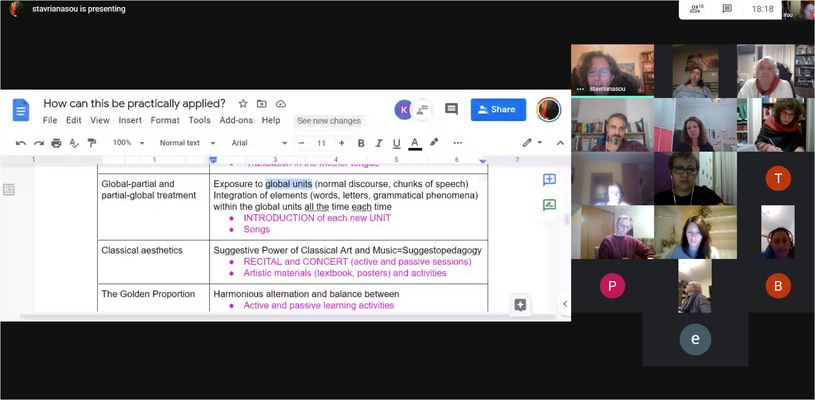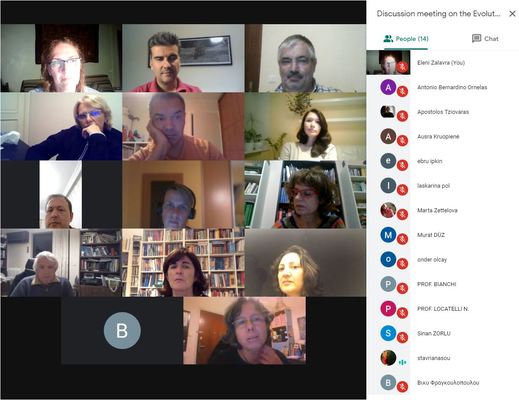Here are our NOTES from the second online meeting (Demember 11th, 2020)


| Principles | Practical ideas for their application |
| There are unused capacities of the human brain/psyche | Absolute faith in the reserves (Hypermnesia, Hypercreativity, Spontaneous Cure from didactogenic diseases) |
| Infantilisation (becoming children again) | Mother tongue natural acquisition processes |
| Learning is both conscious and unconscious | Scenario-based / experiential learning |
| LOVE | Motherly love = fading scaffolding |
| FREEDOM | Tender suggestion VS authoritative commands |
| Whole-brain learning | Multi-sensory input / multiple intelligences / differentiation (analysis / synthesis, reading/playing, sitting down/dancing etc) |
| Passive knowledge (recognition) is of the same value as active knowledge (production) | The pyramid of knowledge: (greater volume at the bottom where passive knowledge accumulates and less volume at the top where there is production) Constructivist approach to learning (building up new knowledge on the basis of the existing knowledge) |
| Global-partial and partial-global treatment | Exposure to global units (normal discourse, chunks of speech) Integration of elements (words, letters, grammatical phenomena) within the global units all the time each time |
| Classical aesthetics | Suggestive Power of Classical Art and Music=Suggestopedagogy -
RECITAL and CONCERT (active and passive sessions) -
Artistic materials (textbook, posters) and activities |
| The Golden Proportion | Harmonious alternation and balance between |
| Concentrative psychorelaxation | Mental alertness with physical relaxation = increased perception -
Suggestive atmosphere -
Classical Music |